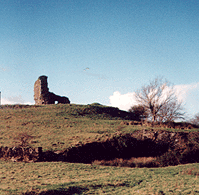Existing records for the area show
that the vikings, who were raiding the monasteries and hamlets around
850AD, referred to the island as 'Vod Iy' meaning Holy Island and that
there were at least two monasteries and a priory on the island from 500AD.
The O'Sullivans came to the Bantry area, taking over from smaller clans and later monks arrived from Co.Mayo, having been granted land here by the High King of Ireland as recompense for an O'Sullivan raid on their monastery at Cong.
The O'Sullivans & the monks controlled
the Bay and inner harbour and Reenananig castle was built to fortify the
O'Sullivan grip on trade, the remains of which can still be seen today.

During the 1700s Whiddy prospered on the pilchard fishing industry, with a fleet of 150 boats, and three 'Fish Palaces' near the eastern slipway. The population at this time numbered 817 people, though at present it stands at only 30.
1796 saw the arrival of the famous
French invasion force under Wolfe Tone - which, mostly due to adverse
weather conditions, was doomed to failure. As a consequence of this the
English decided to build three gun batteries on the island to protect
the port from further invasions. 186 men and 7 artillery officers were
stationed there for a time to man the 18 large cannons which the batteries
housed. They were abandoned in 1807 and left in the care of a local family.
During the Great Famine the population decreased to about 250 and Lord
Bantry introduced deer farming to the island - taking over much of the
good tillage ground. Civil unrest ensued and many people were tried in
the courts or hung on the infamous 'hanging tree', near the site now known
as Gallows Hill.
In 1918 the Americans built a seaplane base on the eastern end of the island to keep watch on German submarines & shipping. This was closed in 1919 and little remains of it today. A lonely fountain stands as a monument to it's whereabouts, almost lost amid the grass and wildflowers.